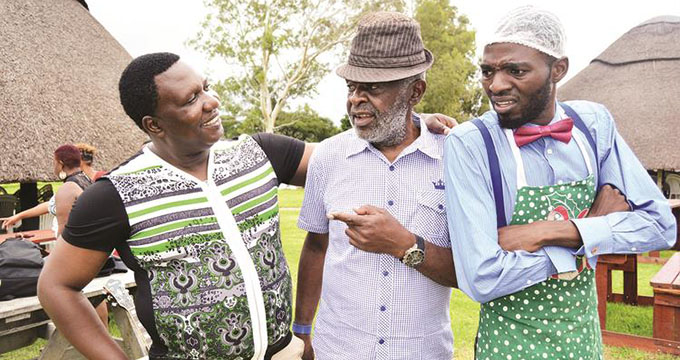How can Africa mitigate perennial water challenges?

Ruth Butaumocho African Agenda
The onset of the rainy season last week brought smiles to many people who had been patiently waiting for the heavens to open up.
However, the smiles, genuinely as they might have been, were predicated on different reasons.
For farmers, the downpour was an early signal of a promising farming season.
For once they were optimistic that a good farming season was in the offing after years of successive droughts during which they failed to realise a return on their investment.
Basing on the weather forecasts of normal-to-above-normal rainfall, the majority of farmers are well-prepared and anticipate a bumper harvest this season.
For the multitudes of urban dwellers, they had everyone reason to smile and celebrate because the downpour signalled an end to their water woes that had haunted them for months.
Unlike previous years, this year’s water woes were dire, resulting in thousands of people failing to access clean water. With no other alternative water sources, major cities such as Harare and Bulawayo had to ration the precious liquid. Still that did not end the perennial water woes. For satellite cities like Chitungwiza, the problem was so severe that residents resorted to buying water for daily use from “waterprenuers”, whose prices were beyond the reach of many.
Suffice to say the water crisis is one of the biggest challenges facing Africa amid growing urbanisation, which has stretched water and sewage treatment facilities.
The problem came to head during the Covid 19 pandemic when the world realised that one of the most effective ways of averting the virus was to wash hands with soap regularly under clean running water.
The first line of defence against Covid-19 presented Africa with an opportunity to introspect on its water challenges, which have been haunting the continent for decades.
Population growth in the last decade and the effects of climate change have presented serious challenges for local authorities in developing countries.
As Africa’s cities grow, demand for water has become a source of consternation. Not only are water and sanitation services essential for city residents, they are also indispensable for the tourism sector, which is an important source of government revenue, employment and economic growth.
Researchers have since predicted that in the coming decade, the water crisis remains the highest concern ahead of climate change, extreme weather events, food crises and social instability.
A director at one of the global water campaigns — Helena Molina-Valdes of UNISDR’s “Making Cities Resilient” Campaign — aptly described the situation when she said; “Many cities and towns throughout Africa are struggling to meet basic urban infrastructural needs such as clean water, waste management disposal and drainage systems”.
However, water woes that the continent are experiencing did not mushroom overnight. The situation is a macrocosm of several underlying issues that Africa had been facing, but authorities chose to look the other way, hoping it would be wished away.
Had central governments taken up the initiative to put effective measures in place when distress signs started showing as far back as 50 years ago, the situation would not have been this dire despite the population explosion in urban areas.
One of the major factors that have further compounded water woes in Africa has been failure by central governments to closely control water resources and instead leave local authorities in charge with the hope that they would be adequately delivered together with other service provisions.
Central governments merely handed over the responsibility without putting into place mechanism for the coordination of activities or monitoring strategies to ensure adequate management and accountability.
Given the huge responsibility of managing such a precious resource, local authorities appeared not to have taken it seriously, hence the lack of investment in water projects.
This explains why the Government has on several occasions has had to bail out Harare City Council through rehabilitating Morton Jaffray Waterworks.
With a population of over three million, the satellite town of Chitungwiza has dismally failed to provide clean water to its residents and relies on boreholes for household use.
The same situation prevails in rural arid regions of Namibia or Mali, where water for domestic use is often unavailable.
Countries such as the Democratic Republic of Congo, Tanzania and Mozambique face same similar challenges, putting millions of residents at risk of contracting water borne or diarrhoeal diseases such as typhoid.
The immediate solution for African countries would be to capacitate institutions that are entrusted with handling water resources to ensure that there are able to manage water reservoirs.
Governments will need to invest more in water infrastructure and dam construction as part of the long-term solution.
Such investments require huge budgets that would also require the private partnership involvement. South Africa is working with private partners to provide water for its citizens. The partnerships with financial institutions and other corporate organisations have already yielded positive results.
However, for many African countries, the challenge is not only about lack of funding, but acquiring the technical expertise to efficiently manage and use existing water resources properly.
While drilling boreholes, rain harvesting and maximising and rehabilitating existing water sources could help in the short-term, central governments need to allocate huge budgets for construction of dams.
Feedback: [email protected]










Comments